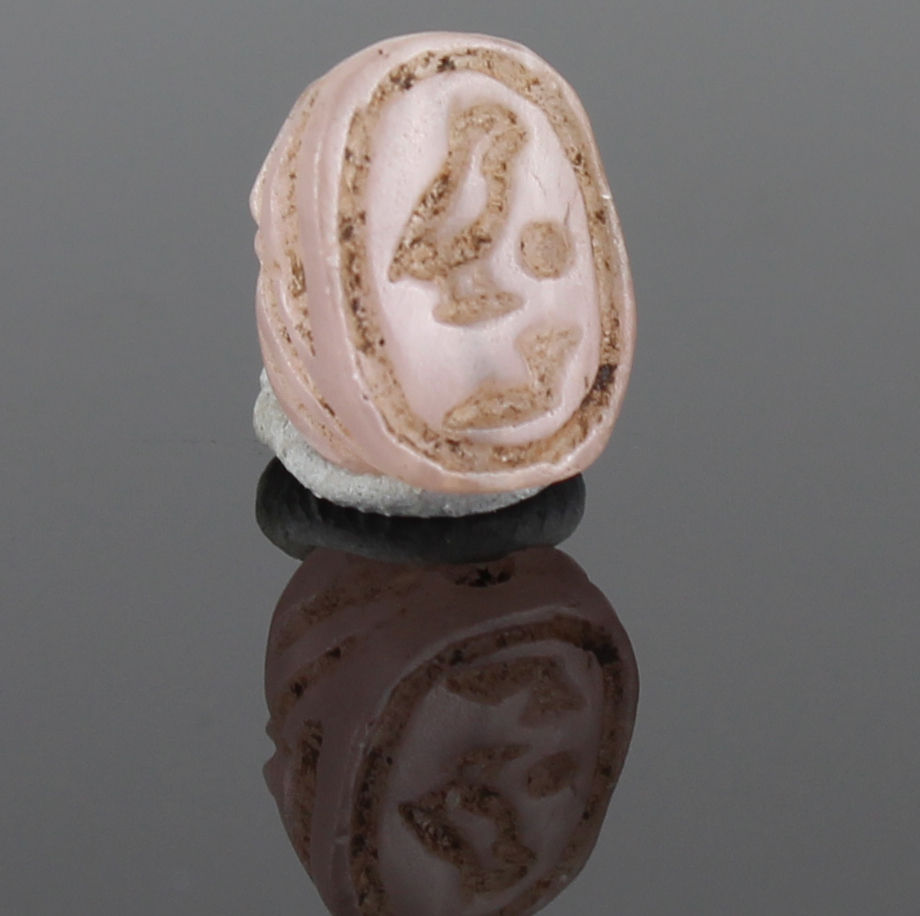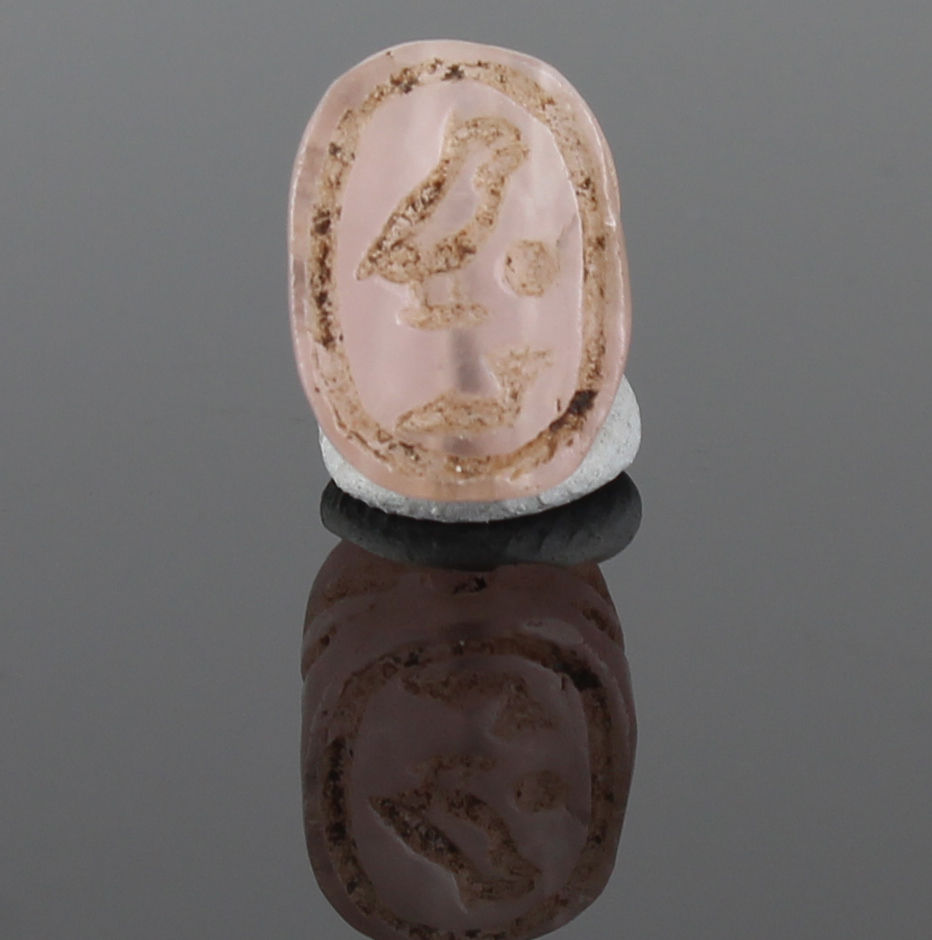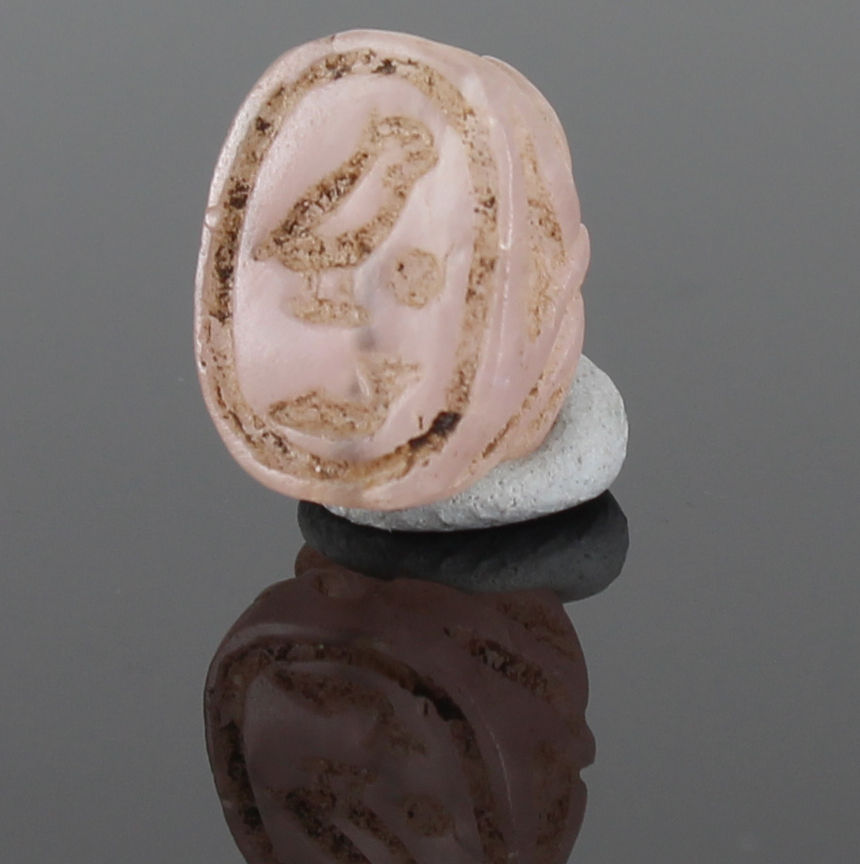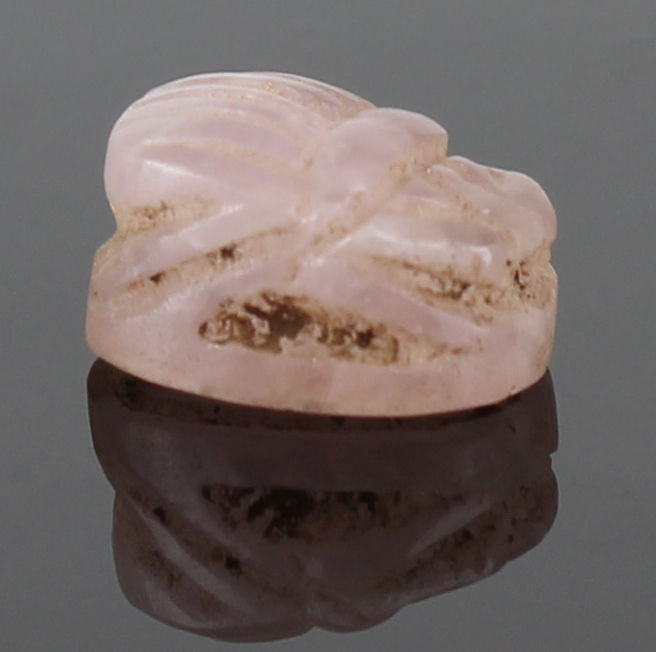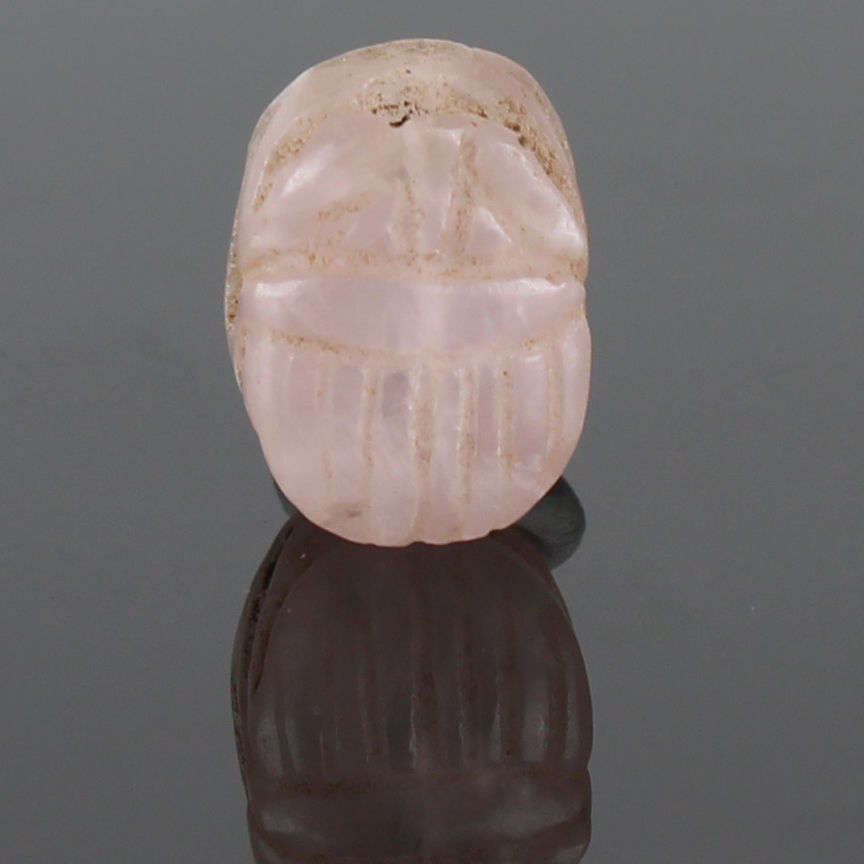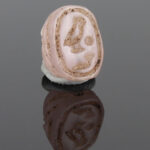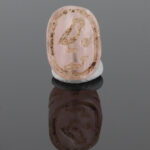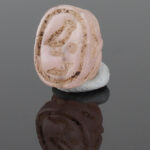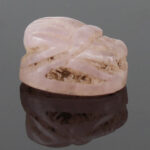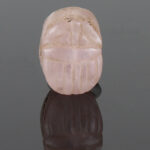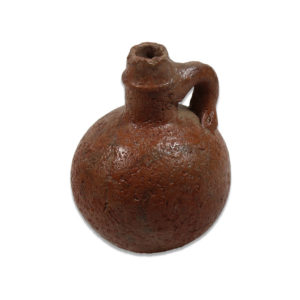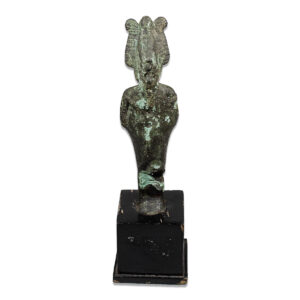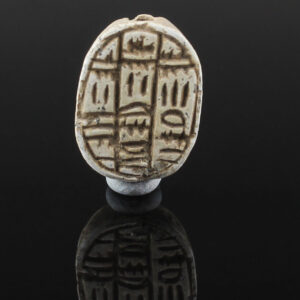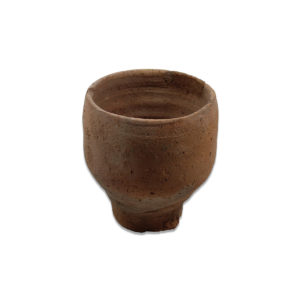Description
| ITEM | Scarab with pharaoh Cheops |
| MATERIAL | Amethyst |
| CULTURE | Egyptian |
| PERIOD | New Kingdom, 1550 – 1070 B.C |
| DIMENSIONS | 12 mm x 8 mm |
| CONDITION | Good condition |
| PROVENANCE | Ex Museum Exhibiton of the Arbeitsgruppe für Biblische Archäologie, Germany (Deaccession) |
Khufu or Cheops was an ancient Egyptian monarch who was the second pharaoh of the Fourth Dynasty, in the first half of the Old Kingdom period (26th century BC). Khufu succeeded his father Sneferu as king. He is generally accepted as having commissioned the Great Pyramid of Giza, one of the Seven Wonders of the Ancient World, but many other aspects of his reign are poorly documented.
The only completely preserved portrait of the king is a three-inch high ivory figurine found in a temple ruin of a later period at Abydos in 1903. All other reliefs and statues were found in fragments, and many buildings of Khufu are lost. Everything known about Khufu comes from inscriptions in his necropolis at Giza and later documents. For example, Khufu is the main character noted in the Westcar Papyrus from the 13th dynasty.
Most documents that mention king Khufu were written by ancient Egyptian and Greek historians around 300 BC. Khufu’s obituary is presented there in a conflicting way: while the king enjoyed a long-lasting cultural heritage preservation during the period of the Old Kingdom and the New Kingdom, the ancient historians Manetho, Diodorus and Herodotus hand down a very negative depiction of Khufu’s character. Thanks to these documents, an obscure and critical picture of Khufu’s personality persists.


